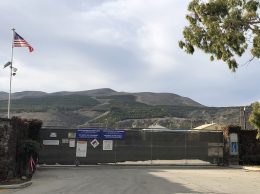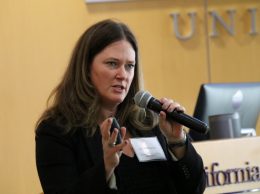Carson: Connectivity is new electricity in pandemic
IN THIS ARTICLE
- Higher Education Topic
- Guest commentary Author
By Guest commentary Friday, July 3rd, 2020
By Loredana Carson
The current pandemic has sharpened our focus on many issues in the past 90 days, and it is important that these crucial matters do not recede from view as the virus ebbs and flows. The past three months of physical distancing has shown how fragile our ecosystem really is.
According to the U.S. Census, as of 2018, only 86.8 percent of households in Ventura County (population 846,000) and 85.3 percent in Santa Barbara County (population 446,400) have internet access, which lines up with the California Department of Education records showing that 20 percent of public school students in the state have no computers or internet with which to access remote learning.
Given that in both counties 22 percent of the residents are under the age of 18, this puts a significant number of students at risk when circumstances force an abrupt shift to distance learning. While obviously we had never contemplated such an event, now that it has happened once, we have no excuse to avoid mitigating the issues that caused the most significant problems of the emergency deployment of online learning.
Initiatives such as Assembly Bill 1665 (Internet for All Now), which was signed into law in 2017 with the goal of increasing internet access to 98 percent of Californians by 2022, will require dedicated funding, an increased sense of urgency and strong support in order to see the vision to completion. If we can accept the fact that we might need to be ready again at a moment’s notice to switch gears to a home-based learning situation for any one of multiple reasons including climate, pandemic, fire, flood, infrastructure rupture or other unforeseen issues, it is incumbent on leaders to double their efforts to ensure access for all to participate in this possible new normal.
According to California State Superintendent of Public Instruction Tony Thurmond, the digital divide has the biggest impact on students in special education classes, English-language learners, and low-income and rural populations. We need to work together to erase the inequitable distribution of connectivity, which impacts these populations that are the most at-risk.
The superintendent advocates donating to California Bridging the Digital Divide, an advocacy group that has raised $15,000 in a GoFundMe campaign launched in April. Clearly, asking individuals to donate is not going to get the state near its total of meeting the needs of 1.2 million students currently without internet access.
This task requires the heavy lifting of our state and even national government to appropriate the needed funding to level the playing field for all students.
We don’t know when this pandemic will end or under what circumstances, and we have no idea what the future holds. We do know what we need to do to prepare, and we have no excuse not to do so. Every student needs to be ready to learn in a virtual environment if necessary, and every teacher needs to be provided with instruction on how to best reach students using this medium.
In the past, electricity wasn’t a given, and there remained pockets without access to this important utility until the national government intervened.
We are at such a watershed moment today, and it is clear that we need to prepare in earnest for interruptions in our daily life without forsaking the education of our students.
The matter of connectivity is of ongoing concern, and not simply because of the pandemic’s influence on the education system. Even during normal times, homework assignments increasingly require use of the internet.
Students who don’t have access or the necessary hardware are left behind and compromised in their ability to participate fully in the education process.
It is time to move forward on this impactful issue and see that no child is left behind.
• Loredana Carson is a lecturer in the California Lutheran University School of Management.
Related Articles
 Friday, October 14th, 2022
Friday, October 14th, 2022











